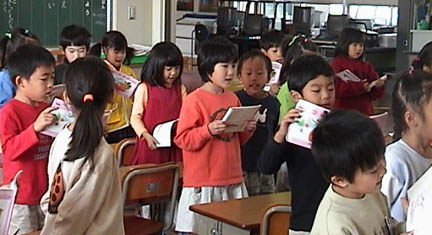 In Japan, guideline is important at the simple and lower helper levels. Most understudies go to state subsidized schools through the lower assistant level, however private educating is noticeable at the upper discretionary and school levels. Japan's preparation structure had central effect in Japan's recovery and snappy fiscal advancement in the decades taking after the end of World War II.
In Japan, guideline is important at the simple and lower helper levels. Most understudies go to state subsidized schools through the lower assistant level, however private educating is noticeable at the upper discretionary and school levels. Japan's preparation structure had central effect in Japan's recovery and snappy fiscal advancement in the decades taking after the end of World War II.
After World War II, the Fundamental Law of Education and the School Education Law were built up. The last law described the instructive framework that is still subsequently today: six years of grade school, three years of center school, three years of auxiliary school, two or four years of school.
Preparing before grade school is given at kindergartens and day-care centers. Open and private day-care centers take adolescents from under age one on up to five years old. The undertakings for those adolescents developed 3–5 resemble those at kindergartens. The enlightening philosophy at kindergartens changes exceptionally from unstructured circumstances that push play to significantly sorted out circumstances that are based on having the child finish the situation test at a private grade school.
Formal direction in Japan began with the determination of Chinese society, in the 6th century. Buddhist and Confucian teachings and what's more sciences, calligraphy, divination and composing were taught at the courts of Asuka, Nara and Heian. Scientist powers were picked through an Imperial examination system. In any case, contrary to China, the system never totally snatched hold and titles and posts at the court stayed hereditary family having a place. The rising of the bushi, the military class, in the midst of the Kamakura period completed the effect of analyst powers, yet Buddhist religious groups stayed enticing centers of learning.
In the Edo period, the Yushima Seidō in Edo was the manager educational foundation of the state; and at its head was the Daigaku-no-kami, a title which recognized the pioneer of the Tokugawa get ready school for shogunate directors.
Under the Tokugawa shogunate, the daimyō vied for power in the, all things considered, pacified country. Since their effect couldn't be raised through war, they fought on the budgetary field. Their warrior-turned-common hireling Samurai top of the line must be told not simply in military framework and the contentious system, furthermore agribusiness and accounting. In like way, the prosperous seller class required direction for their consistently business, and their wealth allowed them to be supporters of expressions and science. Regardless, asylum schools (terakoya) taught laborers too, and it is surveyed that toward the end of the Edo period half of the male and 20% of the female people had some level of training. In spite of the way that contact with outside countries was limited, books from China and Europe were energetically remote made and Rangaku ("Dutch studies") transformed into a surely understood region of scholarly pastime.
0 comments:
Post a Comment